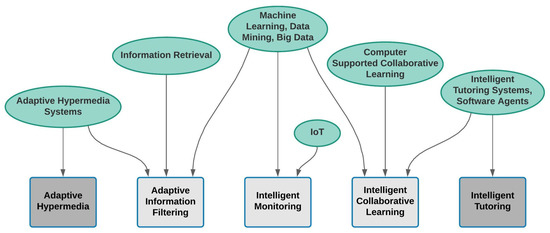See This Report on Bioinformatics Tutor
See This Report on Bioinformatics Tutor
Blog Article
About Bioinformatics Tutor
Table of ContentsBioinformatics Tutor Can Be Fun For EveryoneAbout Bioinformatics TutorFascination About Bioinformatics TutorThe Ultimate Guide To Bioinformatics TutorBioinformatics Tutor for Dummies
Of the overall individuals included in the training, 80% were pupils from public college organizations, while the continuing to be 20% came from exclusive institutions. To qualify for a certification of involvement, pupils were called for to go to at least 90% of the overall training hours. As an outcome of this demand, an outstanding 95% of the participants successfully gotten their certifications, having not only satisfied the minimum presence standards yet likewise finished all assigned tasks throughout the training.
During the height of the COVID-19 pandemic, especially in between June and August 2020, the task group was charged with organizing specialized training in bioinformatics. This training was especially intended at students from the study group Nucleus for Study in Applied Computer at the Federal College of Pará (UFRA) The adaptation to remote knowing systems as a result of the pandemic produced a possibility to explore new training approaches and electronic tools that improved both reach and performance.
This training course was created to offer an accessible yet detailed overview of Artificial Intelligence techniques, particularly as applied in bioinformatics (Bioinformatics Tutor). This online style enabled engagement from students across Brazil, many of whom may not have had the possibility to participate in in-person sessions.
Our Bioinformatics Tutor Ideas
A notable feature of this course was its focus on hands-on understanding. Approximately 50% of the overall training hours were dedicated to functional activities where trainees constructed intelligent models and applications in a variety of scientific domains, consisting of genetics, molecular biology, and environmental information analysis. Commonly utilized tools and structures such as Spyder, Google Colab, Jupyter Notebooks, and Orange were incorporated right into the coursework. These platforms allowed trainees to engage in real-time data manipulation, design training, and algorithm testing.
The course drew in 80 participants in total amount. Sixty of them were associated with various college organizations in the state of Pará, while the continuing to be twenty originated from establishments located in 5 various other Brazilian states. This broad geographical representation highlighted the national rate of interest in bioinformatics and the expanding demand for specialized abilities around. By introducing Artificial Knowledge in a sensible and pertinent context, the campaign served to bridge the gap between concept and real-world application, giving students with a strong foundation for future research or work in the field.
The training campaign created part of a wider scholastic outreach initiative recognized as the Bioinformatics when driving job. This task has, throughout the years, introduced loads of students to the world of bioinformatics and computational biology. The occasions held under this umbrella initiative have taken area throughout several regions and years, as summed up in Table 1 (List of occasions, places, years, and total varieties i loved this of trainees and teachers)
Numerous of these teams, initially brought together by their participation in training events, have actually considering that gone on to create independent clinical study in collaboration with local scholastic establishments. The training not just fostered scientific thinking within the context of bioinformatics however also sparked joint connections that expanded beyond the training setting.
The Bioinformatics Tutor Ideas
The exact same group, omitting IH and RR, additionally acted as tutors for the practical training modules. Funding for the project was supplied with the grant 88887.200562/ 2018-00 from CAPES.
The Federal University of Pará's Workplace of Research (PROPESP/UFPA) likewise provided financial backing, particularly for the manufacturing of the final manuscript. The writers proclaim no economic or industrial conflicts of rate of interest that might have influenced the research study. Moreover, all analyses and read this post here point of views expressed in this short article are entirely those of the writers and do not always mirror those of their particular organizations, the publisher, editors, or customers associated with the magazine process.

Things about Bioinformatics Tutor
From a pedagogical point of view, the teaching method used in the training was deliberately interactive. Classes were carried out in a fashion that encouraged pupil involvement and conversation, surpassing rote memorization to explore exactly how concepts are established, applied in daily life, and examined in scholastic setups. The instructional philosophy focused on nurturing both strong and battling students, supplying customized assistance, and building self-confidence via sustained mentorship and persistence.

Each group, containing about 36 participants, was sustained by three mentors-- a lot of whom were postdoctoral researchers with specialized competence. These mentors not just helped create the group tasks yet additionally promoted their execution, guaranteeing that each research study concern was both appropriate and suitably challenging. The goal was to give a naturally practical context that individuals could check out via open-ended goals and accessibility to curated datasets.
For added insights into the method and outcomes of this project-based discovering technique, readers are directed to S1 Text, which consists of thorough descriptions of the instructional framework, evaluation strategies, and task styles made use of in the training sessions.
Some Known Details About Bioinformatics Tutor
Of the total amount individuals entailed in the training, 80% were pupils from public greater education and learning Website organizations, while the staying 20% came from exclusive organizations. To certify for a certification of engagement, pupils were required to attend at the very least 90% of the overall training hours. Especially, past the students who enlisted in the training sessions, 7 knowledgeable teachers participated in providing the programs, while three devoted research study professors worked with the general training process. Roughly 50% of the total training hours were devoted to practical activities where students built smart versions and applications in a variety of scientific domains, including genetics, molecular biology, and environmental information analysis. The training not only fostered scientific reasoning within the context of bioinformatics however likewise triggered joint connections that expanded beyond the training setting.
Report this page